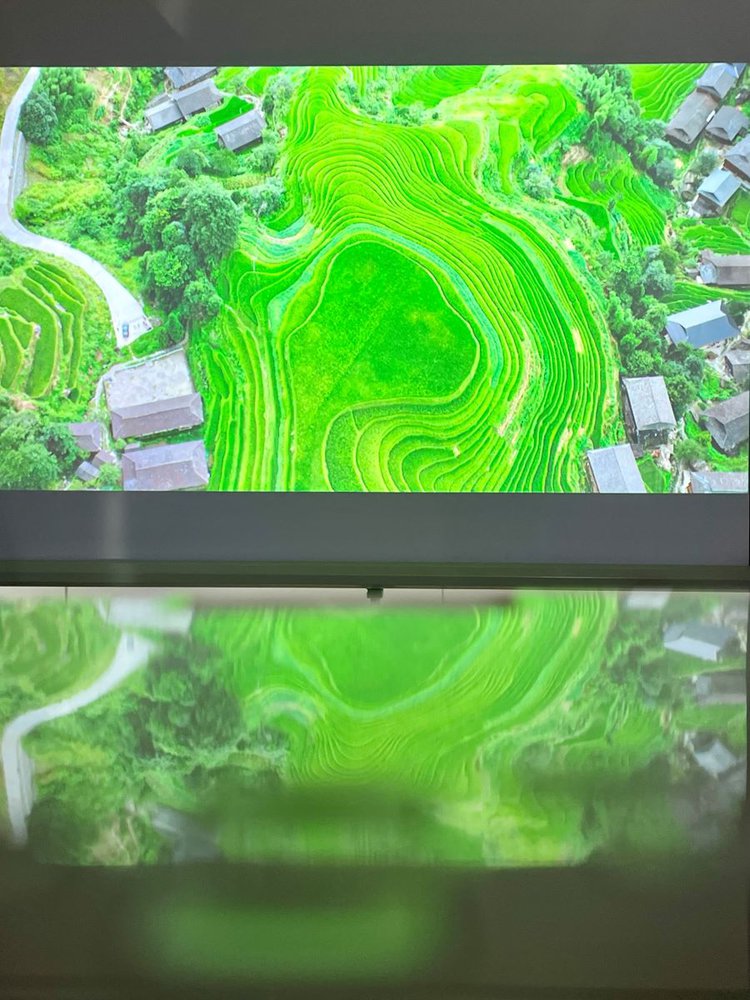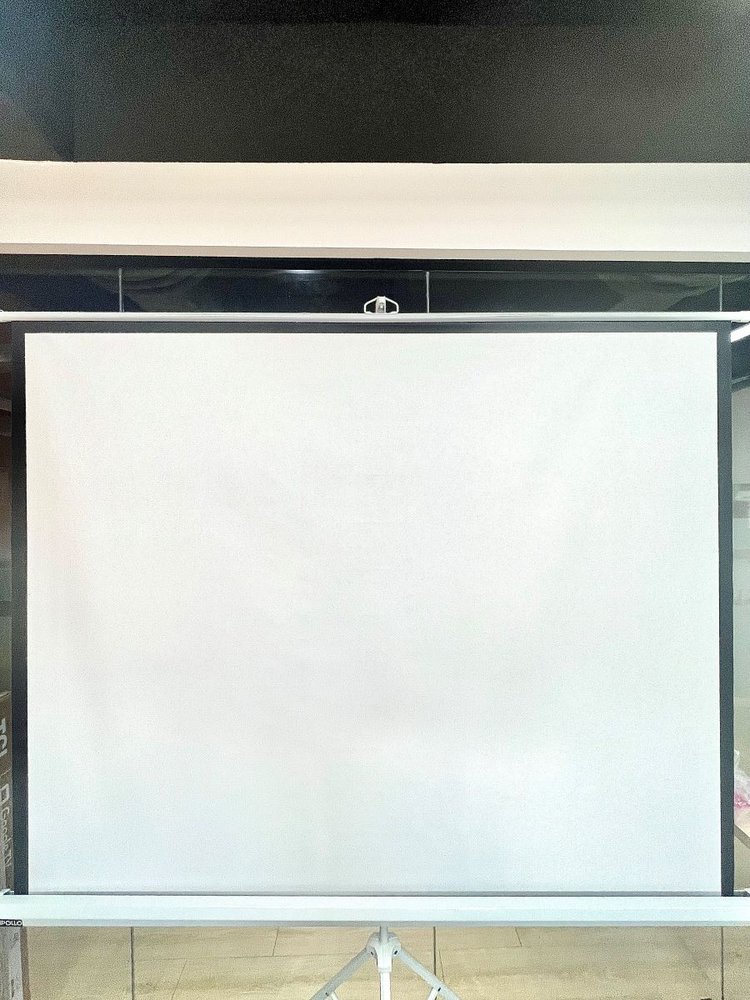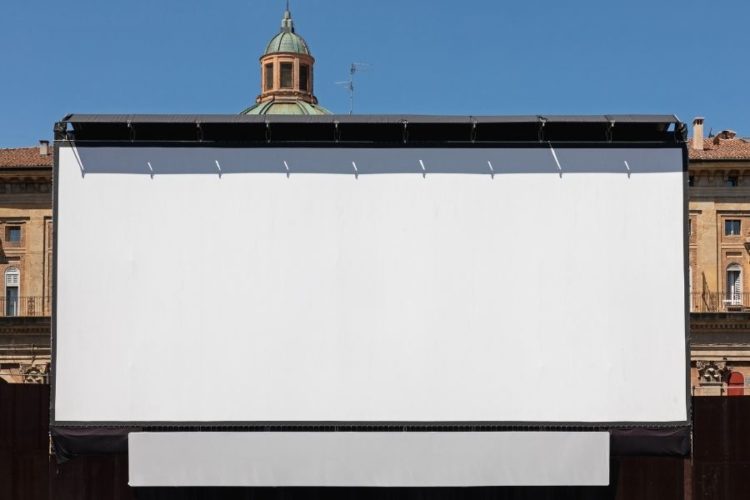What Is the Best Color for Your Projector Screen? White, Black or Gray

What To Know
- The best screen color depends on projector brightness and ambient light, with white being optimal for outdoor use, and black or gray better suited for darker rooms or when seeking enhanced contrast.
- White screens reflect all colors, ensuring vibrant visuals and accurate color reproduction in both bright and dark environments.
- Black screens, absorbing light, offer low gain and enhance contrast, ideal for dark rooms and cinematic experiences, while gray screens provide a balance between brightness and contrast in moderately lit spaces.
Choosing the right color for your projector screen can be a perplexing quest.
This concise guide demystifies the intricacies of screen colors, promising to resolve your dilemma and elevate your viewing experience.
Quick Navigation
What Is the Best Color for a Projector Screen?
When it comes to selecting the best color for your projector screen, there is no definitive answer. The choice depends on your specific purpose and the power of your projector.
For vibrant outdoor events, where harsh lighting conditions are prevalent, a white screen with its high gain is the ideal choice.
For immersive movie nights or intense gaming sessions, both gray and black screens can meet your requirements.
If you seek deep contrast and a truly cinematic feel, a black screen is recommended.
However, if you prefer to maintain a certain level of brightness without sacrificing contrast, a gray or even a white screen would be more suitable, particularly when using a less powerful projector.
To assist you further, we have provided a table below that evaluates screen colors based on our assessments from very bad to excellent.
| Projectors | Powerful Projectors (2,500 or above lumens) |
Not-So-Powerful Projectors (below 2,500 lumens) |
||||
| Screen Colors | White | Black | Gray | White | Black | Gray |
| For Gaming & Night Movies | Okay | Excellent | Good | Excellent | Okay | Good |
| For Meetings, Educational Activities, or Ambient Light Conditions | Good | Excellent | Okay | Good | Bad | Not Recommended |
| For Outdoor Events | Excellent | Not Recommended | Okay | Okay | Very bad | Bad |
Understanding Screen Gain and Its Importance
It’s crucial to grasp the concept of screen gain and its profound impact. Luckily, we have an insightful article that explains screen gain in detail, which you can find here.
In a nutshell, screen gain refers to the reflectivity of your screen, multiplying the brightness emitted by your projector.
Understanding this fundamental aspect will lay the groundwork for making an informed decision.
Now that we have a solid understanding of screen gain, let’s dive into three primary colors of projector screens: white, black, and gray.
Each color possesses unique characteristics that influence your viewing experience.
White Screens

Among the three color options, white screens typically boast the highest gain.
The reason behind this lies in white’s composition of all colors, enabling it to reflect any light with great intensity.
As a result, white screens faithfully reproduce projected images, ensuring accurate color representation and vibrant visuals.
Their high reflectivity makes white screens the perfect choice for combating ambient light, allowing viewers to enjoy a clear and immersive experience whether it’s a professional meeting, an educational classroom, or even an outdoor event.
Furthermore, white screens can also be well utilized in a dark room where your projector’s brightness is also weak.
They effectively maximize the limited brightness available, resulting in a more enjoyable viewing experience in low-light conditions.
So, whether it’s a well-lit room or a dimly lit space, a white screen proves to be a versatile and reliable option.
Black Screens
In complete contrast to white screens, black screens possess the lowest gain, and instead of being a combination of colors like white, black is the lack of color.
This makes black screens absorb light rather than reflect it, creating a captivating effect on image contrast.
While using a black screen in environments with ambient light would be disastrous (especially if your projector is not powerful enough), they excel in enhancing contrast, particularly during night movie screenings.
Dark scenes appear deeper and more immersive, creating an unparalleled cinematic experience.
To witness the contrast-enhancing ability of black screens, we invite you to watch the accompanying video, where the power of black screens truly shines.
Note: The projector used in the video is a powerful one boasting 3,700 lumens. That’s why you’re still able to see images appear clearly on the black screen even in ambient conditions.
Gray Screens
Sitting between black and white screens, gray screens offer a versatile middle ground.
Their gain falls within a broad range, allowing them to maintain a certain level of contrast while providing flexibility in different lighting conditions.
Although gray screens may not perform as well as white screens in bright settings, they excel in dark rooms, offering a balanced visual experience.
These screens find their sweet spot in environments with average brightness, striking a balance between contrast and performance.
Bonuses
The Perfect Projector Screen Color for Dark Rooms
When it comes to dark rooms, the optimal projector screen color depends on the brightness of your projector.
According to the ranking in the table, if your projector’s brightness is 2,500 lumens or above, black screens are undoubtedly the best choice.
However, if your projector’s brightness falls below 2,500 lumens, we advise opting for gray or white screens to enhance light reflectivity and ensure a clear and enjoyable viewing experience.
The Best Screen Color for Outdoor Projectors

For outdoor projection, white screens reign supreme regardless of your projector’s brightness or power.
In today’s world, it is rare to find a location dark enough to fully take advantage of black screens, whether it is daytime or nighttime.
Although black screens might still work with an extremely powerful projector in an outdoor area that is below ambient-light brightness, they are not the most recommended option.
In such cases, a gray screen would be the ideal choice as it maintains a moderate gain while providing a certain level of contrast to enhance your viewing experience.
Ideal Colors for Projector Screen Walls
We understand that choosing the right color for your projector screen wall is crucial.
To find the answer that suits your specific needs, we recommend reading our comprehensive article titled Will My Projector Work on a Colored Wall? – All Colors (From Black, White To Gray, Green, Beige, Etc.).
This article delves into the topic explicitly and provides valuable insights to help you make an informed decision.
To Sum Up
In conclusion, when choosing the best color for your projector screen, it is essential to consider factors such as screen gain, ambient light conditions, and the power of your projector.
White screens offer high reflectivity and accurate color reproduction, making them versatile for various settings, including well-lit rooms and outdoor events.
Black screens excel in enhancing contrast and creating immersive experiences, particularly for movie nights.
Gray screens strike a balance, providing decent contrast and flexibility in environments with average brightness.
Ultimately, the best color choice depends on your specific needs and preferences.
By understanding the characteristics and differences between white, black, and gray screens, you can make an informed decision to enhance your viewing pleasure and make the most out of your projector.
Remember to consider the brightness of your projector and the lighting conditions of the space to find the perfect match for your requirements. Happy projecting!
Duy Anh is a seasoned technical editor specializing in helping readers troubleshoot TV, projector, and Wi-Fi issues. He’s always been drawn to logical problem-solving. His ability to approach matters from various angles with a neutral mindset enhances his technical expertise.

